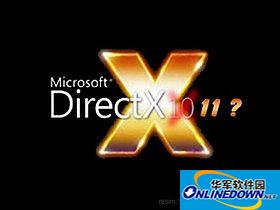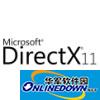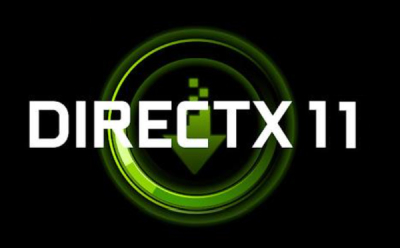- Green versionView
- Green versionView
- Green versionView
- Green versionView

Operating environment: Full support for Windows 7
DirectX 11 new technologies:
DirectX 11 brings five important features: Tessellation (embedded subdivision surface technology), Multi-Threading (multi-threading), DirectCompute (general-purpose computing), Shader Model 5.0 (rendering engine 5.0) and Texture Compression (texture compression), bringing better visual enjoyment to users.
Win7 directly provides DirectX 11, while Vista can support 11.0 by upgrading the DirectX driver package.
New technology preview
1. Direct3D11 rendering pipeline:
DirectX 11 is cooler than DirectX 10. Many of the improvements in DirectX 11 mean higher performance for features that are rarely seen in DX10. The biggest difference between DirectX 11 and DirectX 10 is the pipeline. It can be said that the rendering pipeline of DirectX 11 marks a revolutionary step in graphics hardware and software functions. DirectX 11 adds support for Tessellation.
2. Tessellation mosaic technology:
Since the release of R600, the term DirectX 11 has begun to appear more and more on the Internet. Although both R6xx and R7xx hardware have tessellator units, since tessellator is a proprietary implementation,
The tessellator can divide some larger primitives into many smaller primitives and combine these small primitives together to form an ordered geometry, which is more complex and of course closer to reality. This process is also called Subdivision Surfaces. For example, tessellator can make a cube look like a sphere through processing, which undoubtedly saves space. In addition, graphics quality, performance and controllability have also been improved.
3. Multi-threading support:
Since the new features of DX11 can even be applied to DX10 hardware, we are very looking forward to and optimistic about the rapid application of DX11. DX11 features also include a very important point: support for multi-threading. Yes, whether it is DX10 or DX11, all color information will eventually be rasterized and displayed on the computer display (whether linearly or synchronously), but DX11 has added support for multi-threading technology. Thanks to this, applications can simultaneously create useful resources or manage state, and send extraction commands from all dedicated threads, which is undoubtedly more efficient. Game developers are provided with incentives to develop DX11 games, even though A/N's DX11 hardware is still in its infancy.
4. Compute Shader:
Many game developers have praised the new Compute Shader (often referred to as CS) feature of DX11. This rendering pipeline of CS can perform more general purpose operations. We can see this property both in certain operations that can be performed on the data, and in certain data that can be operated on.
With the help of DirectX11 and CS, game developers can use more complex data structures and run more general algorithms in these data structures. Like other fully programmable DX10 and DX11 pipeline stages, CS will share a set of physical resources (i.e. shader processors).
At the same time, CS will also lose some features. Because a single thread is no longer considered a pixel, the thread will lose its geometry collection functionality. This means that although CS programs can still take advantage of texture sampling capabilities, automatic three-line LOD filtering calculations will lose automatic functionality (LOD must be specified). In addition, some unimportant depth culling, anti-aliasing, alpha blending, and other operations on common data cannot be performed in a CS program.
5. Shader Model 5.0:
DirectX 10's Shader Model 4.0 (Shader Model, hereinafter referred to as "SM") brings the functions of integer operations and bit operations, and DirectX 10.1's SM 4.1 adds direct sampling and control of MSAA. SM 5.0 included in DirectX 11 adopts an object-oriented concept and can fully support double-precision data. With the release of SM 5.0, Microsoft will also update the HLSL language to the latest version, which includes dynamic shading, dynamic branching and more objects. In short, SM 5.0 for professional developers still aims to reduce the difficulty and complexity of programming.
6. Improved texture compression:
The visual impact of fine textures is obvious. Current 3D games tend to use larger and more detailed textures, but overly large textures seriously consume video memory and bandwidth. Since texture compression still does not support HDR images, DirectX 11 proposes better texture compression algorithms-BC6 and BC7. BC6 is a compression algorithm designed for HDR images with a compression ratio of 6:1; while BC7 is a compression mode designed for low dynamic range textures with a compression ratio of 3:1. The two compression algorithms have less image quality loss and better effects under high compression ratios.



































Useful
Useful
Useful